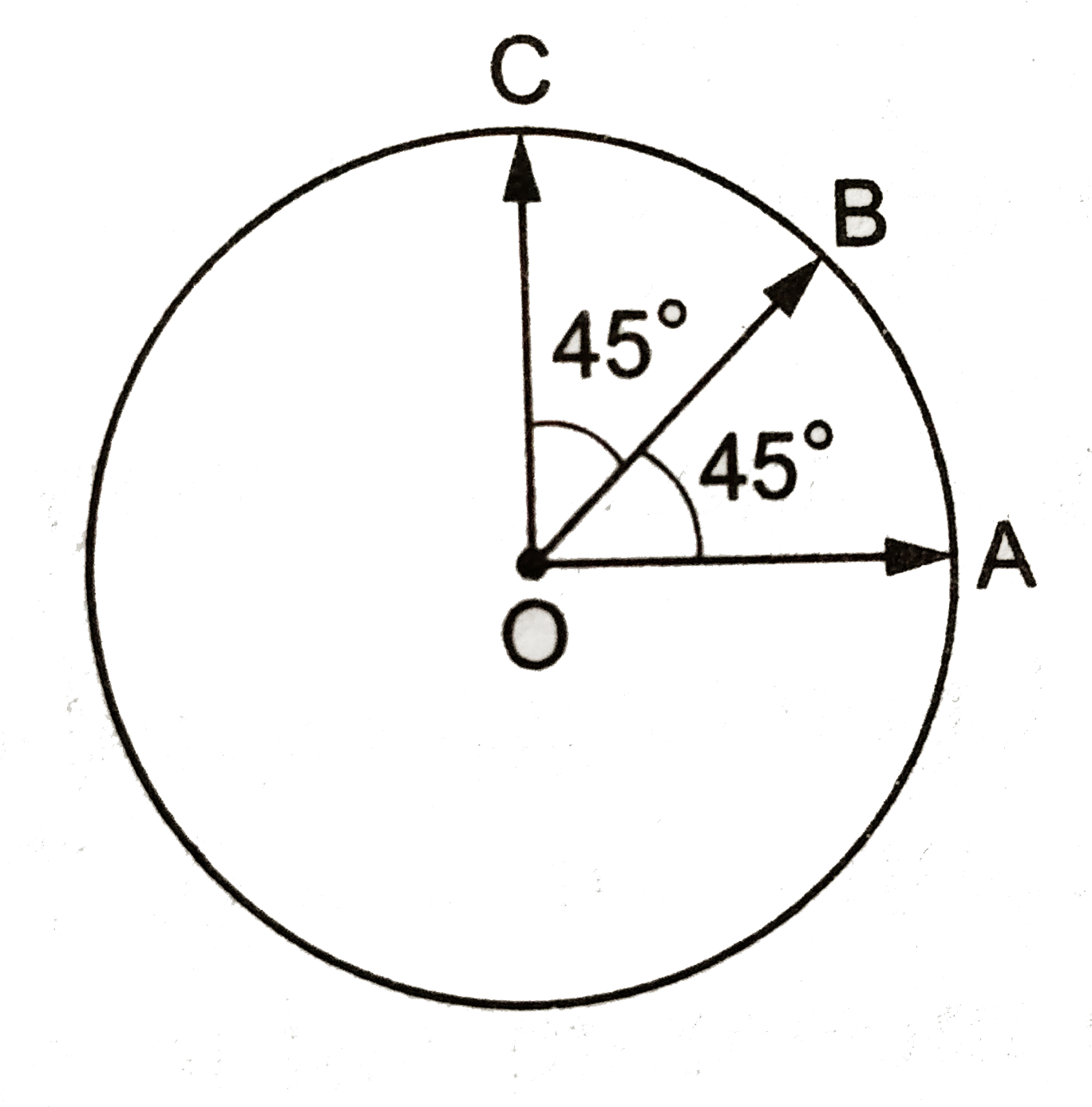The resultant of vectors −−→OAand−−→OB is perpendicular to −−→OA. Find the angle AOB.
 Solution in Tamil
Solution in Tamil
Take the dotted lines as X,Y axes.
x -component of −−→OA=4m, x-component of
−−→OB=6mcosθ.
x- component of the resultant =(4+6cosθ) m.
But it is given that the resultant is along Y-axis. Thus, the -component of the resultant =0
4+6cosθ=0,or,cosθ=23
Topper's Solved these Questions
- BOOK - HC VERMACHAPTER - PHYSICS AND MATHEMATICSEXERCISE - Question for short Answer14videos
PHYSICS AND MATHEMATICS
- BOOK - HC VERMACHAPTER - PHYSICS AND MATHEMATICSEXERCISE - Objective 16videos
PHYSICS AND MATHEMATICS
- BOOK - HC VERMACHAPTER - PHYSICS AND MATHEMATICSEXERCISE - Exercises34videos
PHYSICS AND MATHEMATICS
- BOOK - HC VERMACHAPTER - NEWTON'S LAWS OF MOTIONEXERCISE - Exercises42videos
NEWTON'S LAWS OF MOTION
- BOOK - HC VERMACHAPTER - REST AND MOTION : KINEMATICSEXERCISE - Exercises51videos
REST AND MOTION : KINEMATICS
Similar Questions
Is a vector necessarily changed if it is rotated through anangle?
02:00View SolutionA vector is not changed if
02:15View SolutionA vector →A makes an angle of 20∘and→B makes an angle of 110∘ with the X-axis. The magnitude of these vectors are 3 m and 4 m respectively.Find the resultant
06:16View SolutionA block of mass 2 kg placed on a long frictionless horizontal table is pulled horizontally by a constant foerce F. It is found to move 10 m in the first two seconds. Find the magnitude of F.
03:57View SolutionA man goes 10 m due east and then 24 m due north. Find the distance of his current position from the starting point ?
10:49View SolutionIf −−→OA=2ˆi+3ˆj−4ˆkand−−→OB=ˆj+ˆk are two vectors through the origin O, find the projection of −−→OAand−−→OB
04:00View SolutionIf −−→OA=2ˆi+3ˆj−4ˆkand−−→OB=ˆj+ˆk are two vectors through the origin O, find the projection of −−→OBon−−→OA.
06:52View SolutionThe magnitude of vectors −−→OA,−−→OBand−−→OC in figure are equal. Find the direction of −−→OA+−−→OB−−−→OC.
 .View Solution
.View SolutionFind the resultant of the three vectors −−→OA,−−→OB and −−→OC shown in figure. Radius of the circle is R.
 03:55View Solution
03:55View Solutionदिखाए गए वेक्टरो −−→OA,−−→OB तथा −−→OC के परिमाण बराबर है। वेक्टर −−→OA+−−→OB−−−→OC की दिशा बताएँ।
 06:12View Solution
06:12View Solution−−→OA तथा −−→OB का परिणामी −−→OA के लंबवत है। कोण AOB का मान निकले।
 03:01View Solution
03:01View SolutionIf OAB is a tetrahedron with edges and ˆp,ˆq,ˆr are unit vectors along bisectors of
−−→OA,−−→OB:−−→OB,−−→OC:−−→OC,−−→OA respectively and ˆa=−−→OA∣∣∣−−→OA∣∣∣,→b=−−→OB∣∣∣−−→OB∣∣∣,→c=−−→OC∣∣∣−−→OC∣∣∣, then :View SolutionIf OAB is a tetrahedron with edges and ˆp,ˆq,ˆr are unit vectors along bisectors of
−−→OA,−−→OB:−−→OB,−−→OC:−−→OC,−−→OA respectively and ˆa=−−→OA∣∣∣−−→OA∣∣∣,→b=−−→OB∣∣∣−−→OB∣∣∣,→c=−−→OC∣∣∣−−→OC∣∣∣, then :03:14View SolutionFind the resultant of the vectors −−→OA,−−→OB,−−→OC as shown in figure. The radius of the circle is r.
04:56View SolutionThe magnitude of vectors −−→OA,−−→OBand−−→OC in figure are equal. Find the direction of −−→OA+−−→OB−−−→OC.
 .04:37View Solution
.04:37View SolutionFind the resultant of the three vectors −−→OA,−−→OB and −−→OC shown in figure. Radius of the circle is R.
 03:04View Solution
03:04View Solution

